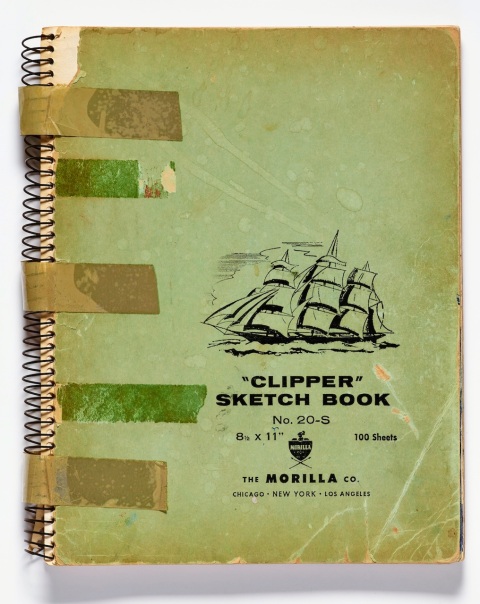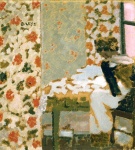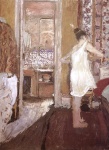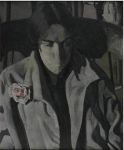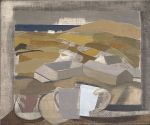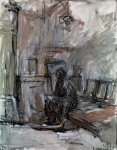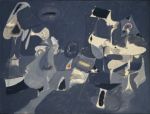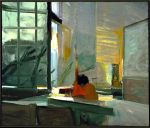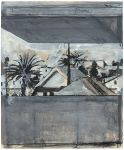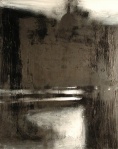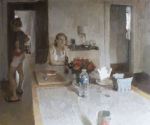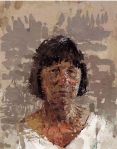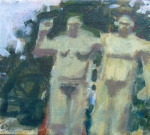Diebenkorn’s Sketchbooks
August 26, 2015 § 1 Comment
Staying Neutral
March 7, 2014 § 3 Comments
Experience teaches us that limitation is the essence of creativity. Like a single flute playing in an echo chamber, the sounded notes of a few colors, a few shapes or lines set up visual resonances within the bounding space of the rectangle, multiplying complexity in unforeseen ways through their endless permutations. Using color in a limited way is a great way to explore this phenomenon. Here are some examples of works that choose to proscribe the range of color intensity, exploring the neutral zone that lies in the center of the color circle. Because of the relativity of color, the rainbow continues to assert itself but in a lowered intensity key. Color appears, not through pigmentation, but through optical relationships. Absence becomes presence.
Henry Villierme
November 10, 2011 § 1 Comment
Richard Diebenkorn on Henry Villierme:
“In the studio it was always a pleasure to confront him and his painting. He was a hard and intense worker. He was anxious for words from me and I would usually come up with some nonsense, which I would interrupt by saying “Look Henry – just keep painting.” But he usually had some questions and you could feel their extreme need for answers. There were never evasions, apologies or excuses as with some students.
I enjoyed my critiques with Henry. His work was always wet and difficult to handle, would have been through hell but would not be tortured. It would be rich and very solid and just faintly bruised and slightly bloodied – ineffaceable evidence of a desperate fight. Henry would respond. “What fight?”
Beyond this Henry’s painting had, and still has, instinctual understanding of that universal human activity in which colors are applied to the surface. Henry’s capacity to bring a work to a final state of open, nonintrospective resolution is impressive. There is no one whom I would feel better about describing as “a real painter”.” (From Henry Villierme.com)
The Beauty of Shapes
September 24, 2011 § Leave a comment
“We look up and see a coloured shape in front of us and we say – there is a chair. But what we have seen is the mere coloured shape. Perhaps an artist might not have jumped to the notion of a chair. He might have stopped at the mere contemplation of a beautiful color and a beautiful shape…” -Alfred North Whitehead
“Remember that a picture, before being a battle horse, a nude woman, or some anecdote, is essentially a plane surface covered with colors assembled in a certain order.” -Maurice Denis (1890)
How often we forget the simple truth of Maurice Denis’ statement as we peer into our three-dimensional world and try to “make” a tree, a face, a figure, or a teacup on our canvas. Annie Dillard’s essay on seeing, from a previous post on this blog, reminds us of just how far we’ve come from the infantile state of innocence when visual sensation was just “color-patches unencumbered by meaning.” The struggle to regain this innocent vision of color and shape is a large part of our “training” as artists. We want to be able to see our sensations, not just the things those sensations add up to, because this kind of seeing is what allows us to form questions that we can take to the palette. What is that hue? What is its tonal value? What is it’s degree of saturation or intensity? These three questions are the Holy Trinity of color mixing. (There’s a fourth, but we’ll save it for another post.)
But mixing color is only one piece of the puzzle. The color has to have a boundary or shape. This is the meeting place of drawing and painting. Stripped of the third dimension, the world’s forms and spaces precipitate two-dimensional shapes. Out of this distilled essence painters compose their paintings. Here are some painters who remind us of the beauty of shapes, all kinds of shapes. That’s what paintings are made of.
